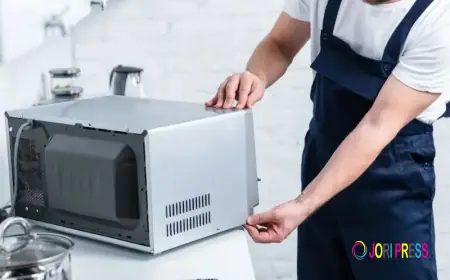Handmade Soap Market Innovation Outlook 2030F
The Handmade Soap Market is experiencing strong growth, driven by rising consumer demand for natural, eco-friendly products, personalized skincare solutions, and increasing awareness of chemical-free, artisanal beauty alternatives.

Introduction
The global handmade soap market has emerged as a rapidly growing segment within the broader personal care and beauty industry. Valued at USD 170.83 million in 2024, the market is projected to reach USD 243.06 million by 2030, expanding at a CAGR of 6.11% during the forecast period.
Unlike conventional soaps that often rely on synthetic chemicals, handmade soaps are typically produced using natural oils, butters, botanical extracts, clays, and essential oils. This artisanal quality not only sets them apart as a premium alternative but also resonates with a growing global movement toward health-conscious, eco-friendly, and sustainable living.
The market’s evolution reflects a deeper consumer shift—from mass-produced, chemically-laden skincare products to authentic, handcrafted solutions that prioritize skin wellness, environmental safety, and ethical values. This transition is being reinforced by global trends such as the “clean beauty” movement, plastic-free packaging initiatives, and personalization in skincare.
In this context, handmade soap is not merely a product but part of a lifestyle choice, representing natural self-care, environmental responsibility, and artisanal craftsmanship.
Market Growth Drivers
1. Rising Consumer Awareness of Skin Health
One of the strongest market drivers is the growing awareness among consumers about the negative effects of synthetic chemicals found in mainstream skincare. Chemical additives, sulfates, parabens, and artificial fragrances have been linked to issues such as dryness, allergies, and skin irritation. Consumers, especially in regions such as North America and Europe, are actively seeking natural alternatives. Handmade soaps, enriched with gentle plant-based oils and therapeutic essential oils, cater directly to this demand.
2. Sustainability and Eco-Conscious Consumption
Global environmental concerns have elevated sustainability to the forefront of purchasing decisions. Handmade soap manufacturers are adopting biodegradable formulations, eco-friendly packaging, and ethically sourced ingredients, appealing to environmentally conscious buyers. The use of recyclable wrappers, compostable labels, or even package-free “naked” soaps has become a selling point for brands targeting millennials and Gen Z consumers.
3. Personalization and Customization in Beauty
The modern consumer increasingly values personalized products. Handmade soaps offer flexibility in fragrance selection, color, ingredient combinations, and skin-type suitability. Consumers can choose soaps for acne-prone skin, anti-aging benefits, sensitive skin, or aromatherapy. This customization creates a premium and intimate consumer experience unmatched by mass-market brands.
4. Growth of E-Commerce and Digital Influence
E-commerce has significantly accelerated handmade soap’s global reach. Online platforms such as Etsy, Amazon Handmade, and brand-specific DTC websites allow small producers to compete with large companies by reaching international audiences. Social media platforms like Instagram, TikTok, and Pinterest have become powerful tools for storytelling, influencer marketing, and visual branding, showcasing handmade soaps as artisanal luxury items.
5. Wellness and Self-Care Movement
Handmade soaps are increasingly associated with holistic wellness and self-care rituals. Consumers no longer view soap merely as a hygiene necessity but as a pampering experience. The rise of aromatherapy-based soaps infused with lavender, peppermint, or citrus oils reflects the merging of skincare and wellness trends.
Download Free Sample Report - https://www.techsciresearch.com/sample-report.aspx?cid=28451
Emerging Trends in the Handmade Soap Market
1. Rise of Organic and Vegan Soap Varieties
Consumers are demanding certified organic, cruelty-free, and vegan-friendly products. Brands that emphasize zero animal testing, plant-based oils, and fair-trade ingredients are seeing rapid growth.
2. Zero-Waste and Plastic-Free Packaging
The “zero-waste lifestyle” trend is pushing brands to innovate in packaging—using compostable paper, seed-infused wrappers, reusable tins, or even eliminating packaging altogether. This eco-forward approach is particularly attractive to sustainability-driven buyers.
3. Functional Soaps for Specific Needs
Handmade soaps are evolving from simple cleansing agents to multi-functional skincare products. Examples include soaps with activated charcoal for detoxifying, goat milk for hydration, turmeric for brightening, and CBD-infused soaps for relaxation.
4. Fusion of Tradition and Modernity
There is a growing interest in soaps inspired by ancient herbal remedies, Ayurvedic formulations, and traditional artisanal techniques, blended with modern dermatological insights. This creates a niche appeal among consumers seeking authenticity with modern efficacy.
5. Customizable and DIY Soap Kits
Brands are innovating by offering DIY soap-making kits or allowing consumers to create personalized recipes online, blending specific scents and ingredients for a unique product experience.
Market Segmentation
By Method Type
-
Cold Pressed Soaps – Retain natural glycerin and essential oils; dominate the artisanal segment.
-
Hot Pressed Soaps – Faster production but slightly less nutrient retention.
-
Melt & Pour Soaps – Popular among DIY enthusiasts and smaller-scale artisans.
-
Others – Specialty methods including traditional herbal infusions.
By Application
-
Face Washing – Growing demand for mild, natural cleansers.
-
Bathing – Largest segment, driven by daily use.
-
Clothing & Cleaning – Niche applications with sustainable household appeal.
-
Others – Pet care soaps and specialty hygiene products.
By Distribution Channel
-
Online Retail – Fastest growing, fueled by e-commerce expansion.
-
Offline Retail – Specialty stores, farmer’s markets, and boutique outlets remain strong.
By Region
-
North America & Europe – Dominant markets with strong preference for clean beauty.
-
Asia Pacific – Fastest-growing, driven by rising middle-class spending and e-commerce.
-
Latin America & Middle East – Emerging interest due to rising eco-conscious consumer base.
Industry Key Highlights
-
Market Size 2024: USD 170.83 Million
-
Forecast 2030: USD 243.06 Million
-
CAGR (2024–2030): 6.11%
-
Fastest-Growing Region: Asia Pacific
-
Key Growth Driver: Rising demand for natural and sustainable skincare solutions
-
Leading Distribution Channel: Online sales
Competitive Analysis
The global handmade soap market is highly fragmented and competitive, with both established brands and emerging artisans competing on quality, sustainability, and brand storytelling.
Key Companies:
-
Lush Fresh Handmade Cosmetics – Pioneer in eco-friendly, package-free, and cruelty-free soaps.
-
Dr. Bronner’s – Globally recognized for organic, fair-trade, and multipurpose soap lines.
-
Burt’s Bees – Strong presence in natural personal care, leveraging loyal customer base.
-
The Soap Kitchen – Known for DIY kits and ingredient supply for handmade soap artisans.
-
Rocky Mountain Soap Company – Popular for toxin-free, Canadian-made soaps.
-
Chagrin Valley Soap & Salve – Focused on USDA-certified organic skincare.
Competition is intensifying as new indie brands leverage social media marketing, storytelling, and customization to carve out niche audiences. Larger companies are responding with sustainability pledges, eco-friendly innovations, and global distribution expansion.
10 Benefits of the Research Report
-
Provides accurate market size, share, and growth projections to guide investment.
-
Identifies key drivers and restraints shaping industry performance.
-
Offers detailed segmentation analysis by method, application, channel, and region.
-
Highlights emerging consumer trends such as sustainability and personalization.
-
Evaluates regional dynamics, identifying high-growth markets and opportunities.
-
Delivers competitive landscape insights, benchmarking key players and strategies.
-
Assesses distribution channel shifts, particularly e-commerce dominance.
-
Equips businesses with future outlook and demand forecasting up to 2030.
-
Supports strategic decision-making with data-driven recommendations.
-
Enables customization opportunities for specific business needs and objectives.
Future Outlook
The handmade soap market is poised for sustained global growth through 2030, fueled by clean beauty adoption, eco-conscious consumption, and the wellness movement.
-
Digital-first strategies will dominate, with direct-to-consumer brands leveraging e-commerce and social media to build loyal communities.
-
Innovation in ingredients such as CBD, probiotics, and superfoods will expand the functionality of soaps beyond cleansing.
-
Sustainability pressures will continue to shape packaging innovations and ethical sourcing practices.
-
Asia Pacific will emerge as a powerhouse market, driven by rapid urbanization, rising disposable incomes, and growing awareness of natural skincare.
-
Customization and personalization will remain a major differentiator, allowing artisanal brands to thrive alongside larger players.
Ultimately, handmade soap will transition from a niche luxury to a mainstream lifestyle product, bridging the gap between wellness, sustainability, and skincare innovation.
Conclusion
The global handmade soap market represents one of the most dynamic and rapidly expanding segments within personal care. With its blend of natural ingredients, eco-friendly appeal, and artisanal craftsmanship, it perfectly aligns with today’s consumer values of health, sustainability, and individuality.
While challenges such as scalability, competition, and regulatory compliance remain, opportunities in emerging markets, digital commerce, and functional innovations position the industry for robust growth.
For investors, manufacturers, and entrepreneurs, the handmade soap market offers a profitable and sustainable avenue, deeply rooted in global lifestyle shifts toward natural self-care and environmental responsibility.
Contact Us-
TechSci Research LLC
420 Lexington Avenue, Suite 300,
New York, United States- 10170
M: +13322586602
Website: www.techsciresearch.com
What's Your Reaction?
 Like
0
Like
0
 Dislike
0
Dislike
0
 Love
0
Love
0
 Funny
0
Funny
0
 Angry
0
Angry
0
 Sad
0
Sad
0
 Wow
0
Wow
0


















































